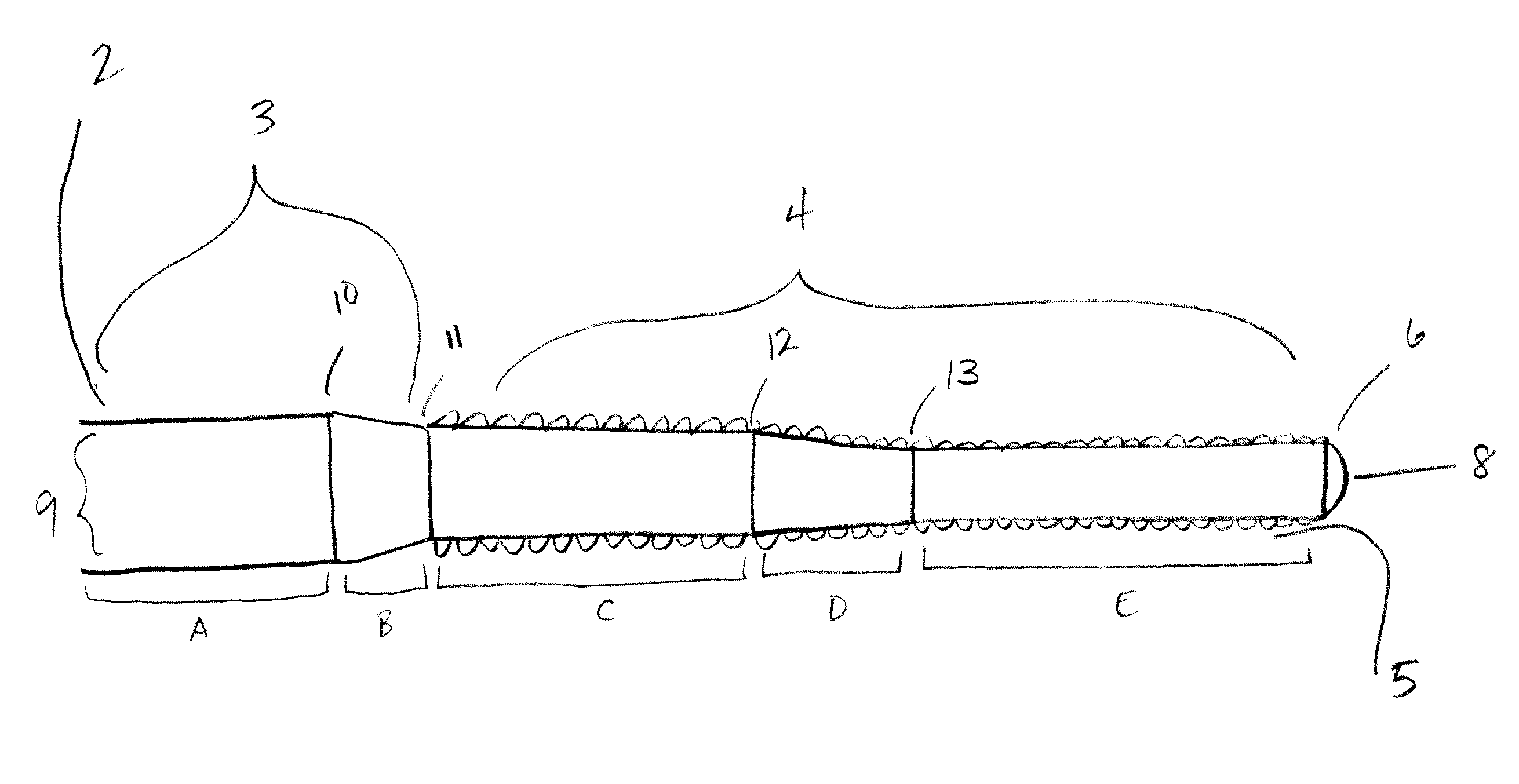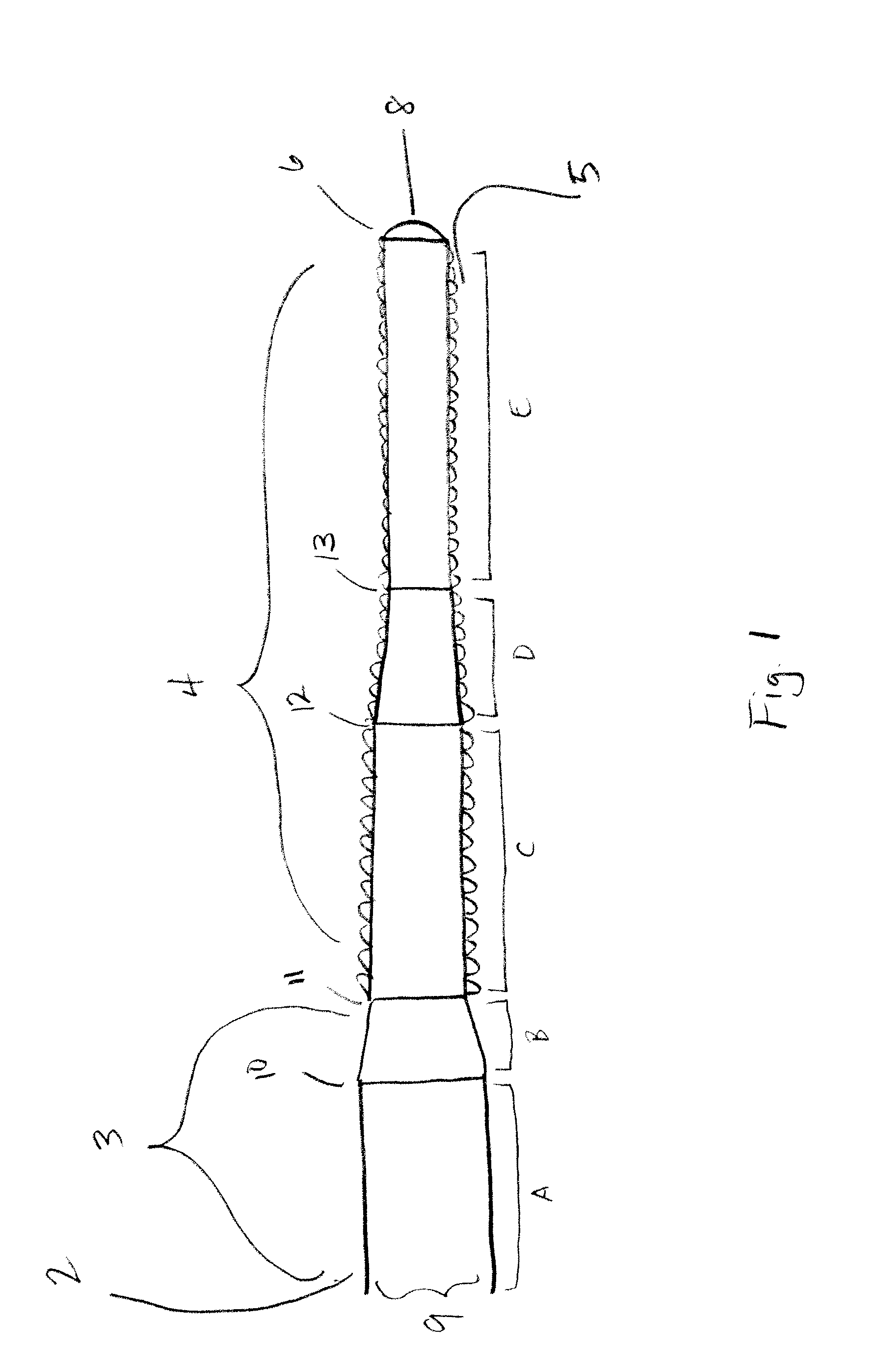Dual Diameter Introducer Guide Wire
a guide wire and introducer technology, applied in the field of guide wires, can solve the problems of kinking of the distal area, inconvenient, time-consuming and dangerous, and the lumen may need to be retracted
- Summary
- Abstract
- Description
- Claims
- Application Information
AI Technical Summary
Benefits of technology
Problems solved by technology
Method used
Image
Examples
Embodiment Construction
[0023]The embodiments of the present invention address numerous needs in the art—among them, the desirability of providing for more clearance for guide wires to enter or retract the lumen of a patient, even when slightly kinked, thus providing for smoother entrance into the body of a patient and less likelihood of complications associated with interventional procedures.
[0024]The guide wires of the present invention provide the advantage of controllability by the user along with flexibility and accuracy in accessing the interior of the body of a patient. It has herein been found that the optimal configuration is one wherein the guide wire is tapered from its proximal end (which the physician will manipulate manually) to its distal end (which is the portion first inserted into the interior of the patient's body). While attempts have been made to provide tapered guide wires, there are currently no known guide wires in the art that are configured such that the interior core wire itself ...
PUM
 Login to View More
Login to View More Abstract
Description
Claims
Application Information
 Login to View More
Login to View More - R&D
- Intellectual Property
- Life Sciences
- Materials
- Tech Scout
- Unparalleled Data Quality
- Higher Quality Content
- 60% Fewer Hallucinations
Browse by: Latest US Patents, China's latest patents, Technical Efficacy Thesaurus, Application Domain, Technology Topic, Popular Technical Reports.
© 2025 PatSnap. All rights reserved.Legal|Privacy policy|Modern Slavery Act Transparency Statement|Sitemap|About US| Contact US: help@patsnap.com



